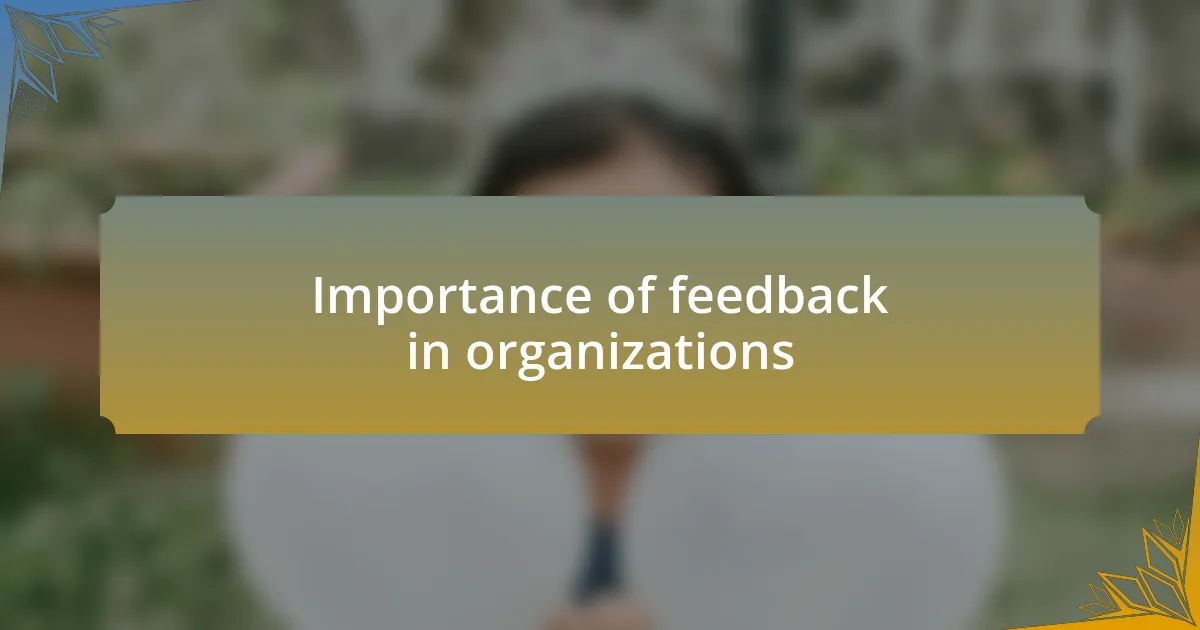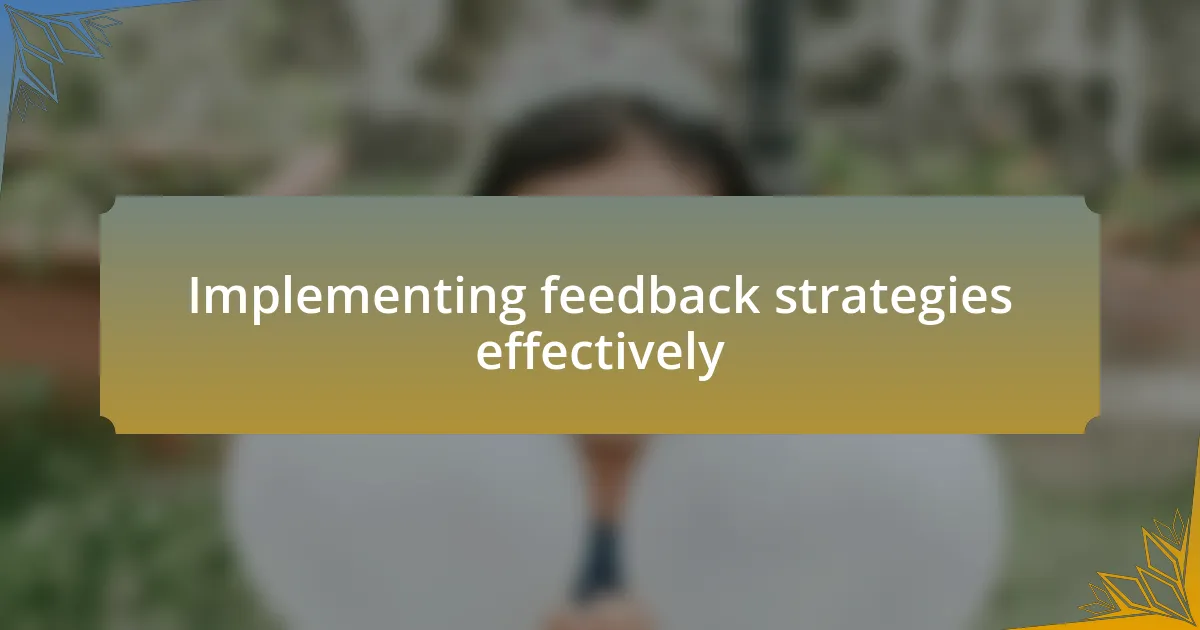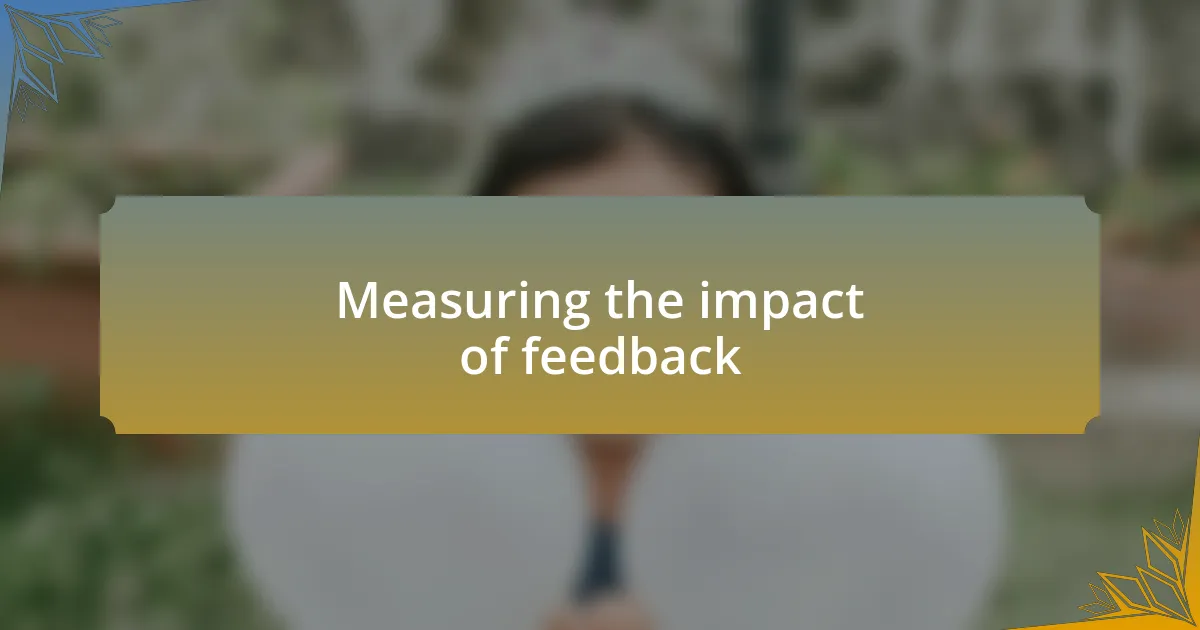Key takeaways:
- Feedback culture encourages open communication and diverse perspectives, leading to growth and innovation.
- Leadership commitment and structured feedback methods, such as regular check-ins and informal settings, foster trust and sharing.
- Actively recognizing and implementing feedback is crucial for maintaining team morale and engagement.
- Measuring the impact of feedback through both qualitative and quantitative means enhances understanding and drives improvement.

Understanding feedback culture
Understanding feedback culture starts with recognizing its foundational role in fostering open communication. I remember a moment early in my career when I received critical feedback after a project presentation. Initially, I felt defensive, but that experience taught me the value of viewing feedback as a pathway to growth rather than a personal attack. Have you ever had a similar moment that reshaped how you perceive feedback?
Creating a feedback culture involves cultivating an environment where people feel safe to share their thoughts. I once worked with a team that held weekly check-ins where everyone was encouraged to voice their opinions openly. It was during one of these sessions that a junior team member provided a fresh perspective that changed our entire approach. This experience highlighted how diverse viewpoints can illuminate blind spots, transforming potential weaknesses into strengths.
To truly embrace a feedback culture, I believe organizations must not only encourage feedback but also model how to give and receive it effectively. Early on, I witnessed teams thriving when leaders made it a point to solicit feedback actively and respond thoughtfully, which created a positive cycle of engagement. Have you considered how leadership behavior shapes team dynamics in your own experience? These moments of connection can make all the difference in building trust and collaboration.

Importance of feedback in organizations
Feedback isn’t just a formality; it’s an essential tool for growth within organizations. I recall a time when a colleague offered a candid critique on my project strategy, and while it stung initially, it propelled me to rethink my approach. That shift in mindset underscored how constructive feedback can spark innovation and drive success if embraced with an open mind.
Moreover, feedback has a profound impact on employee morale and engagement. I once managed a team that implemented regular peer reviews, and the energy in the room shifted dramatically. When employees felt their voices were heard, it not only boosted confidence but also fostered a sense of ownership that translated into higher productivity. How might creating such opportunities for feedback change the dynamics in your organization?
Lastly, organizations that prioritize feedback often see improved customer experiences. In my experience, teams that actively sought customer feedback not only honed their services but also developed a deeper understanding of client needs. This connection can lead to tailored solutions, demonstrating that feedback is not just an internal exercise but a bridge to the people we serve. What insights about customer feedback have you observed in your work?

Setting the foundation for feedback
Establishing a feedback culture begins with leadership commitment to openness. In a previous role, I witnessed firsthand how transparent communication from management created a safe space for sharing thoughts. When leaders express vulnerability and invite critiques, it encourages everyone else to do the same. How can your leadership team model this kind of openness to inspire trust?
Another crucial element is creating structured ways for feedback to flow. I once introduced regular “feedback lunches” where team members could openly discuss their challenges and victories. This relaxed environment not only made sharing easier but also helped cultivate relationships and build camaraderie. Have you thought about how informal settings could promote more honest conversations in your workplace?
Finally, it’s vital to acknowledge and act on the feedback received. I learned the hard way that ignoring input can quickly diminish trust. When I begun implementing changes based on team suggestions, I noticed a remarkable shift in morale. Why does recognition of feedback matter so much, and how might responding to input transform the culture in your organization?

Implementing feedback strategies effectively
Once feedback channels are established, it’s essential to ensure they’re used effectively. I recall introducing a digital platform where team members could submit feedback anonymously. Seeing the initial trepidation transform into active participation was a revelation. But, I found myself wondering—how do we ensure that every voice is heard, especially those who are typically quieter?
I’ve learned that timing is crucial when implementing feedback strategies. During a project debrief, I facilitated an open discussion where we reviewed performance and insights collected throughout the project. The room was electric with energy as people shared openly, and I couldn’t help but feel a sense of pride. How can we encourage consistent communication after such engagements to keep that momentum alive?
Lastly, follow-up is often overlooked yet profoundly impactful. After implementing suggestions, I decided to host a “you said, we did” session, where I’d celebrate the changes made based on feedback. This not only reinforced the value of participation but also fostered enthusiasm within the team. Have you noticed how this acknowledgment can transform the way employees perceive their contributions and the feedback process overall?

Measuring the impact of feedback
Measuring the impact of feedback requires a keen eye on both quantitative and qualitative data. In my experience, I used metrics such as employee satisfaction scores and project turnaround times to assess changes after implementing feedback. I was surprised to find that even subtle shifts in team morale could significantly enhance productivity, leading me to wonder—how often do we overlook the emotional side of data?
I also initiated regular check-ins to dive deeper into feedback trends. During one session, a team member highlighted a recurring theme that I hadn’t noticed: many felt disconnected from strategic goals. This revelation prompted me to adjust our communication approach, and I could see the immediate impact on team alignment and motivation. Have you ever paused to listen to the underlying sentiments behind the numbers?
Additionally, I found it essential to solicit feedback on the feedback process itself. By creating short surveys that asked participants how they felt about providing input, I discovered areas that needed improvement. I vividly remember one interview where a quiet team member shared concerns about not being taken seriously. Addressing those nuances not only strengthened trust but also sparked a rich dialogue on enhancing our feedback culture. It’s fascinating how the act of measuring can reveal so much more than just data points.